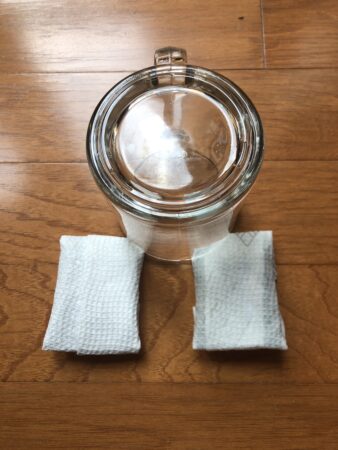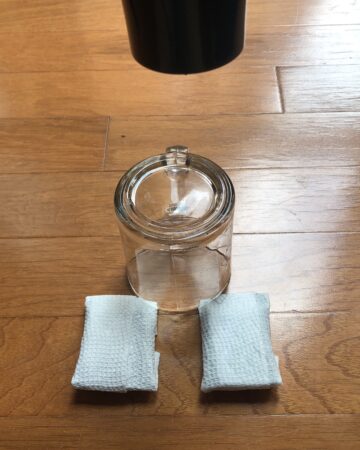Experiment: Keep your candy cool with the power of evaporation!
Use the energy produced when water evaporates to cool down chocolate-covered candy

See how the power of evaporation can keep chocolate from melting even in the summer heat.
philipimage/iStock/Getty Images Plus
Share this:
- Share via email (Opens in new window) Email
- Click to share on Facebook (Opens in new window) Facebook
- Click to share on X (Opens in new window) X
- Click to share on Pinterest (Opens in new window) Pinterest
- Click to share on Reddit (Opens in new window) Reddit
- Share to Google Classroom (Opens in new window) Google Classroom
- Click to print (Opens in new window) Print
Objective: Discover how to use the evaporation of water to keep chocolate-covered candy from melting
Areas of science: Chemistry
Difficulty: Medium beginner
Time required: ≤ 1 day
Prerequisites: None
Material availability: Readily available
Cost: Very low (under $20)
Safety: No issues
Credits: Kelsey Woods, Cyberchase Intern; edited by Sandra Slutz, PhD, and Sabine De Brabandere, PhD, Science Buddies
You’ve probably noticed that when you’re outside on a hot summer day, your body starts to sweat. But did you know that sweat, or perspiration, is actually your body’s way of cooling down? Sweat, which is mostly water, cools us down when it evaporates.
Evaporation is the process that occurs when water changes from a liquid into a gas (in this case, the gas is water vapor). When your sweat evaporates, it carries heat energy from your body with it. The faster your sweat evaporates, the more heat is carried away, and the more the skin surface from which it evaporates is cooled.
As water evaporates from an object, it makes the air above the object more humid (filled with more water vapor), which in turn slows down the evaporation process. This is because once the air is already full of water vapor, there is nowhere for the water on your skin to evaporate. But if you fan the moist, humid air away, then the water can evaporate more quickly. That’s why you feel cooler if you fan yourself or if there’s a gust of wind.
In places with hot weather, engineers design misters — machines that spray a fine water mist — for use in public places to help people keep cool. These misters help out your body’s natural sweat cooling system by providing more water to evaporate and carry away heat energy from your body. Another way that you can keep cool on a hot day is by dipping a bandana in water and wearing it around your neck. The extra water from the bandana causes more evaporation, which keeps your body even cooler than it would be with only sweat.
You can apply the same process of evaporative cooling that your body uses in order to cool down objects. In the PBS Kids TV show Cyberchase episode “Digit’s B-Day Surprise,” the CyberSquad must use evaporative cooling to keep Digit’s chocolate sculpture birthday present from melting while traveling through the desert. Click on the video box above to watch the CyberSquad use the power of evaporative cooling to save Digit’s birthday present.
In the Cyberchase “For Real” segment, wilting in the heat as he tries to play tennis, Harry loses repeatedly to his obnoxious cousin Harley. After Harry realizes that Harley is keeping himself cool using water from a spray bottle with a fan attached, Harry decides to up his game. With a large sprinkler hose and three window fans, he harnesses the power of evaporative cooling on his side of the court, and defeats Harley without breaking a sweat.
How can you use evaporative cooling to keep chocolate candies from melting? This science fair project will help you find out!
Terms and concepts
- Perspiration
- Evaporation
- Gas
- Water vapor
- Humidity
- Evaporative cooling
Questions
- How does sweat cool your body down?
- What are some ways people use evaporation to keep cool?
- How do engineers use evaporation to keep objects cool?
Materials and equipment
- Paper towel (six sheets)
- Scissors
- Small bowl of room-temperature water
- Chocolate candies in wrappers or small chocolate candy bars in wrappers (six) Note: Teardrop-shaped chocolates are not recommended.
- Tape
- Ruler
- Drinking glass
- Hair dryer
- Timer
- Lab notebook
Experimental procedure
1. Cut your paper towel sheet into strips that are about 7.5 centimeters (3 inches) wide.
2. Take one paper towel strip and wet it by dripping water on it. It should feel wet but not dripping.
3. Keeping the candies in their wrappers, tightly wrap one of the candies in the wet paper towel strip and tightly wrap another candy in a dry paper towel strip. The dry paper towel strip might have a tendency to unwrap. Keep it in place with a small piece of tape.
4. Place the two candies side-by-side on a heatproof surface. Place a glass upside down on the edges of the paper strips to keep the candy in place. The setup is shown in Figure 1.

5. Hold your hair dryer so the air will blow down over the candies. The hair dryer should be 20 centimeters (8 inches) above the candy, as shown in Figure 2.

6. Using your timer, blow hot air (with the hair dryer on high) for five minutes.
7. After five minutes, stop the hair dryer. Observe how the paper towel strips have changed. Remove the paper towel strips and open the wrappers.
8. In your lab notebook, record your observations about what happened to the candy wrapped in the wet paper towel versus the candy wrapped in the dry paper towel. A table like Table 1 can help organize your observations.
| Candy wrapped in dry towel | Candy wrapped in wet towel | |
| First trial | ||
| Second trial | ||
| Third trial |
9. Repeat steps 1–8 two more times with new candies and paper towel strips. Are your observations consistent between trials? Can you use the information you learned from the Introduction and your background reading to explain your observations?
10. To gain an even deeper understanding of evaporative cooling, try the Variations.
Variations
- Try the experiment again, using thermometers to determine the starting temperature and the final temperature that each candy reaches after five minutes beneath the hair dryer. Graph your results. Note: for help creating graphs, try the Create a Graph website.
- What happens if you put the candies behind a window in the sun? The sun provides a heat source but the moist air would not be blown away like it is with a hair dryer. How does this affect the melting of the candies? What about the final temperature of the candies? Now what happens if you use a paper fan to fan the paper towel-wrapped candies while they are in the sun?
This activity is brought to you in partnership with Science Buddies. Find the original activity on the Science Buddies website.








